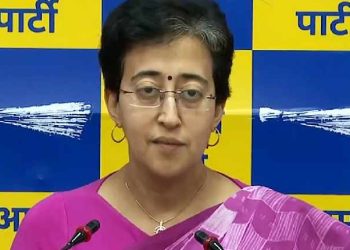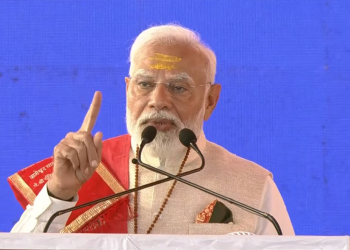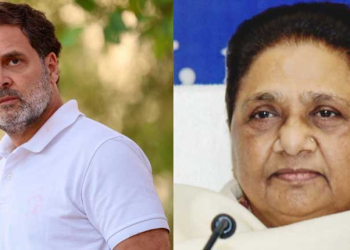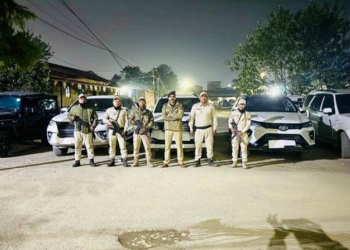New Delhi: From lightweight tanks, naval utility helicopters to drones, India has banned the import of yet another 101 military equipment and systems in a bid to promote indigenisation in defence manufacturing.
Defence Minister Rajnath Singh on Thursday released the third positive indigenisation list of 101 items, comprising major equipment and platforms.
The list, notified by the Department of Military Affairs, Ministry of Defence (MoD), lays special emphasis on equipment/systems which are being developed and are likely to translate into firm orders in the next five years.
These weapons and platforms are planned to be indigenised progressively with effect from December 2022 to December 2027.
These 101 items will, henceforth, be procured from local sources as per provisions of the Defence Acquisition Procedure (DAP) 2020.
“Today’s development follows issue of first list (101) and second list (108) that were promulgated on August 21, 2020 and May 31, 2021, respectively,” said the defence ministry.
Import substitution of ammunition which is a recurring requirement has been given special emphasis.
The spirit behind issuing these three lists comprising 310 defence equipment, slated to be manufactured locally, reflects the growing confidence of the Government in the capabilities of the domestic industry that it can supply equipment of international standards to meet the demand of the Armed Forces.
It is likely to stimulate the potential of indigenous Research and Development (R&D) by attracting fresh investment into technology and manufacturing capabilities. It will provide ample opportunities to the domestic industry for understanding the trends and future needs of the Armed Forces.
The third list comprises highly complex Systems, Sensors, Weapons and Ammunition like Light Weight Tanks, Mounted Arty Gun Systems (155mmX 52Cal), Guided Extended Range (GER) Rocket for PINAKA MLRS, Naval Utility Helicopters (NUH), Next Generation Offshore Patrol Vessels (NGOPV), MF STAR (Radar For Ships), Medium Range Anti-Ship Missile (Naval Variant), Advance Light Weight Torpedo (Ship Launch), High Endurance Autonomous Underwater Vehicle, Medium Altitude Long Endurance Unmanned Aerial Vehicle (MALE UAV), Anti-Radiation Missiles, Loitering Munitions and others.
Addressing the audience on the occasion, Singh described the third list as a symbol of 360-degree efforts being made by the government to achieve Prime Minister Narendra Modi’s vision of “Aatmanirbhar Bharat”.
He exuded confidence that this new list will prove to be crucial in the development of the domestic industry and take the research & development and manufacturing capacity of the country to a higher level.
This third positive indigenisation list has been prepared after in-depth consultations with all stakeholders such as the Defence Research and Development Organisation (DRDO), Department of Defence Production (DDP), Service Headquarters (SHQs) and the private industry.
Singh assured that, similar to the previous two lists, the time limit given in the third list will also be adhered to.
He said the Ministry of Defence, and the Service headquarters will take all necessary steps, including hand-holding of the industry, reiterating the government’s endeavour to create an ecosystem that ensures self-reliance in defence manufacturing and encourages exports.
The DRDO, too, pitched in to strengthen local manufacturing by signing 30 Transfer of Technology (ToT) agreements with 25 industries.
Singh handed over the agreements pertaining to 21 technologies developed by 16 DRDO laboratories spread across the country.
These technologies concern Quantum Random Number Generator (QRNG), developed by a DRDO Young Scientist Lab (DYSL-QT, Pune), Counter Drone System, Laser Directed Energy Weapon System, Missile Warhead, High Explosive Materials, High Grade Steel, Specialised Materials, Propellants, Surveillance & Reconnaissance, Radar Warning Receivers, CBRN UGVs, Mine Barriers, Fire Fighting Suits, Boots for Anti Mine, etc.
So far, DRDO has entered into more than 1,430 ToT agreements with Indian industries, out of which, a record number of around 450 ToT agreements have been signed in the last two years.
Congratulating the DRDO and the Industry, Singh said the handing over of 30 ToT agreements to the Industry shows the increasing trust of Indian industries in DRDO-developed indigenous technologies.
This will further strengthen the manufacturing eco-system in defence systems and platforms, he said, expressing the hope that the private sector will make full use of the opportunities being given to it by the government in order to make India a global defence manufacturing hub.
Listing the measures taken by the government to maximise the participation of the domestic industry, the Defence Minister said 68 per cent of the capital procurement budget has been earmarked for domestic procurement to promote self-reliance and reduce import dependency. The other measures include earmarking 25 per cent of the defence R&D budget for the industry, start-ups and academia and corporatisation of the Ordnance Factory Board.
Singh pointed out that despite hurdles, India has always performed exceptionally well, on its own, in areas such as nuclear technology and space technology, due to the grit and determination of its scientists and researchers.
With the same resolve, India will soon transform into a global manufacturing hub that caters to the domestic requirements, besides being a dominant force in the international market, he added. He described the three lists as a self-imposed vow which can pave the way for a strong and self-reliant ‘New India’.
He underscored the importance of self-reliance in defence production and promotion in exports, terming it as a crucial aspect which strengthens the economy as well as national security, besides improving the socio-economic condition of the country.
Singh called for indigenous development of defence equipment and platform technologies, stressing that the import of systems, with foreign software codes, can prove to be dangerous for the security apparatus as it opens the window of vulnerability.
Emphasising on the need to focus more on indigenisation, he said: “Today, the scope of defence is not limited to borders only. Anyone can now break into the security system of a country with the help of different communication methods. No matter how strong the system is, if it is linked to another country, there is a possibility of a security breach. Earlier, the defence equipment, such as tanks and helicopters, were mainly mechanical in nature. It was not possible to control them. But, newer defence systems and platforms are electronic and software intensive. They can be controlled or subverted from anywhere.”
Stressing on domestic production of ammunition as it ensures uninterrupted supply during wars, Singh appreciated the fact that full attention has been paid to the import substitution of ammunition in the first two positive indigenisation lists.
He said when orders for defence items are given to the domestic defence industry, it provides employment to lakhs of people working in MSMEs connected to the sector, spread across the country.
He maintained that self-reliance does not mean to work in isolation from the rest of the world, but to work with their active participation within the country.
“Even under the ‘Aatmanirbhar Bharat Abhiyan’, we have provisions which provide suitable opportunities and environment to foreign companies to invest, collaborate, set up joint ventures and earn profit,” he said.
The minister reaffirmed the government’s constant endeavour to create an environment where public, private sector and foreign entities can work together and help India to become one of the world’s leading countries in defence manufacturing.
(IANS)


















